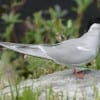 By Jim Stevenson
By Jim Stevenson
Good Morning Folks, In our continued series on Alaskan birds, I hope you enjoy this mono-specific, close look gallery at a unique species chosen to be in the ten most beautiful birds on North America. Happy reading!
If there is anyone else interested in the Florida Peninsula’s trip in early December, please let me know asap! Looks like a small group. Mmmmm.
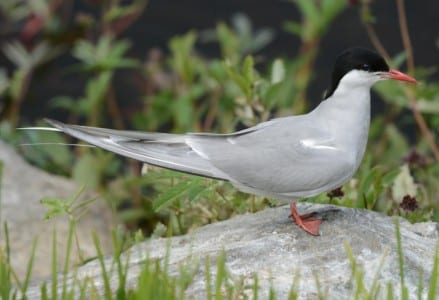
Arctic Terns are a medium-sized species of the family Sternidae, and these terns have gulls as their closest relatives. Most are warm water fish-eaters but this species nests mostly in the Arctic and winters in the Antarctic.
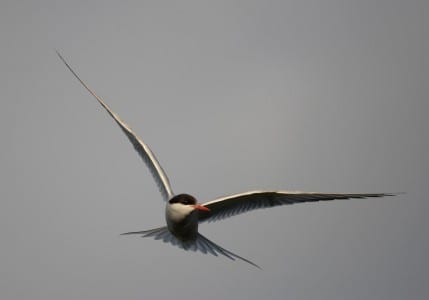
This journey takes many weeks both in fall as well as spring, up and down the Atlantic or Pacific Oceans. They fly far from land and feed on surface-feeding minnows.
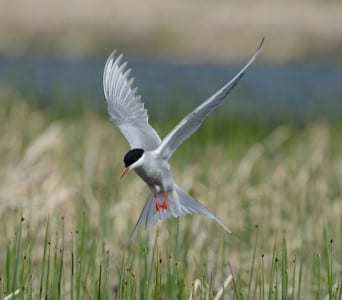
Spring and summer birds are easily identified by their blood red legs, feet and bill. They are also dusky underneath, unlike the white ventrals of most terns.
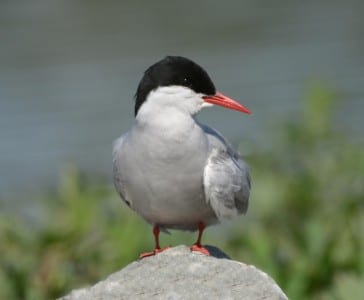
As terns, they have a dagger bill for spearing fish as they dive from above, p lus webbed feet for occasional swims in the sea. They have shorter legs than other terns because it’s less weight for the long journeys.
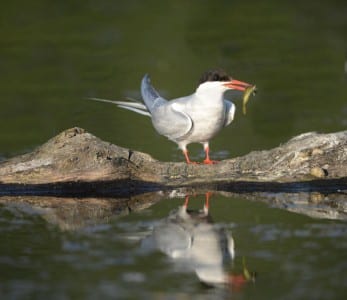
In Potter Marsh just south of Anchorage, they feed almost exclusively on sticklebacks, the famous minnow described and studied by Tinbergen, the famed European ethologist. Diagram that sentence. 😉
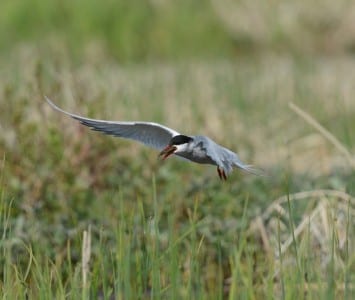
These stickleback males build underwater nests and entice the females to come and lay eggs, fertilized and protected by the dads. The strong (or the lucky) get to pass on their genes but many others wind up like this one, food for baby Arctic Terns.
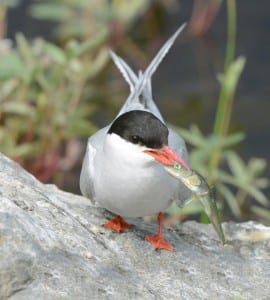
Sticklebacks are relatives of the salt water pipefish and seahorses, but their ancestors became landlocked in High Arctic lakes after the ice ages. Their eyes are made to become very light sensitive in the dark winter months.
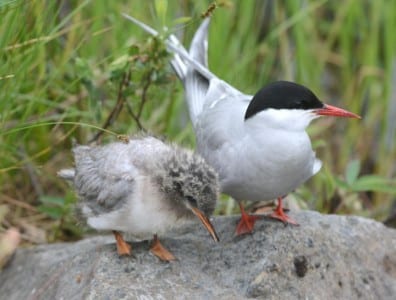
Young Arctic Terns become nearly their parent’s weight while still partially downy, and can wolf down quite a few sticklebacks in the long, Arctic days. Potter Marsh is sub- Arctic, with abut 21 hours of daylight on June 21.
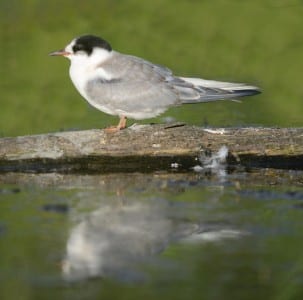
This immature is within a week of fending for himself, and in fact, the parents leave before the chicks. It is astounding that birds six-weeks old can strike out almost from Pole to Pole with no helps but strong wings and good genes.
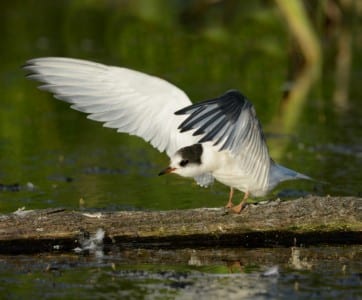
They exercise many times daily to build up their breast muscles, still retaining a little of their baby fat. They won’t get their red soft parts until the following spring.
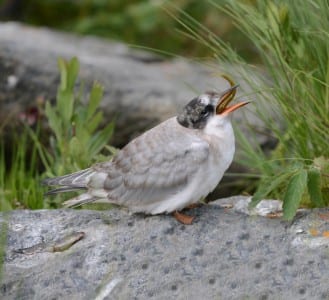
Here is one baby that can’t even down another stickleback, and even has a spare laying on the rock. Birds should always swallow fish head first, something that is in their genes
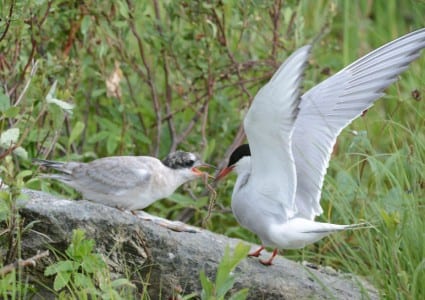
Surprisingly, this parent showed up with a polycheate, a burrowing member of the marine segmented worms. They are related to the terrestrial earthworm (Oligochaeta), but these have “many spines” instead of “few spines,” like their names say.
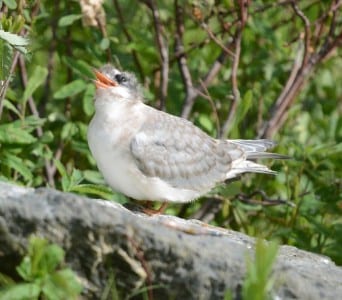
As an ornithologist, I can read the words of birds and their target. This baby is asking God if He is serious about flying to the Antarctic. Or maybe it’s the dad sailing in with yet another stickleback. I’m not sure.
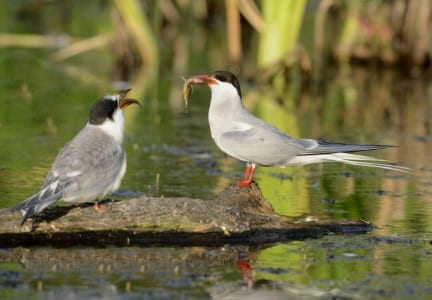
Obviously, growing out the primaries and retrices are among the young bird’s last steps to becoming a successful migrant. He may be getting tired of sticklebacks (maybe you too!) but at least they have no scales to bother with (like seahorses and pipefish).
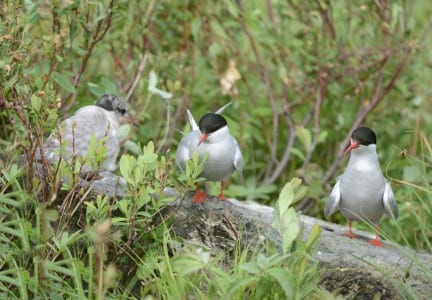
In a brief moment of peace and rest, the family grabs a collective breath before they have to chase off another Mew Gull. Feeding junior 20 hours/day takes its toll…
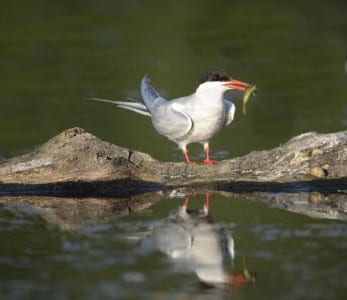
Speciation has apparently happened with quite a few migratory creatures like Arctic Terns, undoubtedly giving rise to the nonmigratory Antarctic Tern. Other birds and even humpback whales have accomplished this.
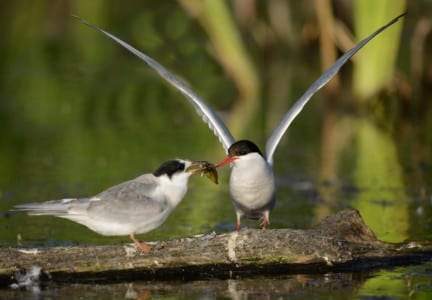
Junior is getting close to a winter plumage adult look while his parents will maintain their sleek feathers for a bit longer. Most birds molt before they migrate, but a few, like Blackbellied Plovers, molt after arriving on their winter range.(In spring, Golden Plovers molt halfway to their breeding grounds!)
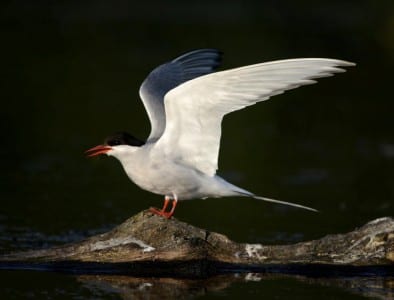
Arctic Terns are considered one of our ten most beautiful birds, and you can see why. Nice choice. Note how the primaries are tapered, with the longest on the end, and so on back down. Boy, you know, with some birds, color just isn’t required. BTW, this species is rare in the Gulf of Mexico (a few records after tropical storms) and even flying up and down the two oceans, they are not often seen from shore. They have the longest migration, but several sandpipers and plovers fly from Arctic America to the southern tip of South America, like Golden Plovers. That’s pretty close! Have a good week. I’m on the CA coast, p lanning (hopefully) for the CA trip next June.

 Posted in
Posted in 
























